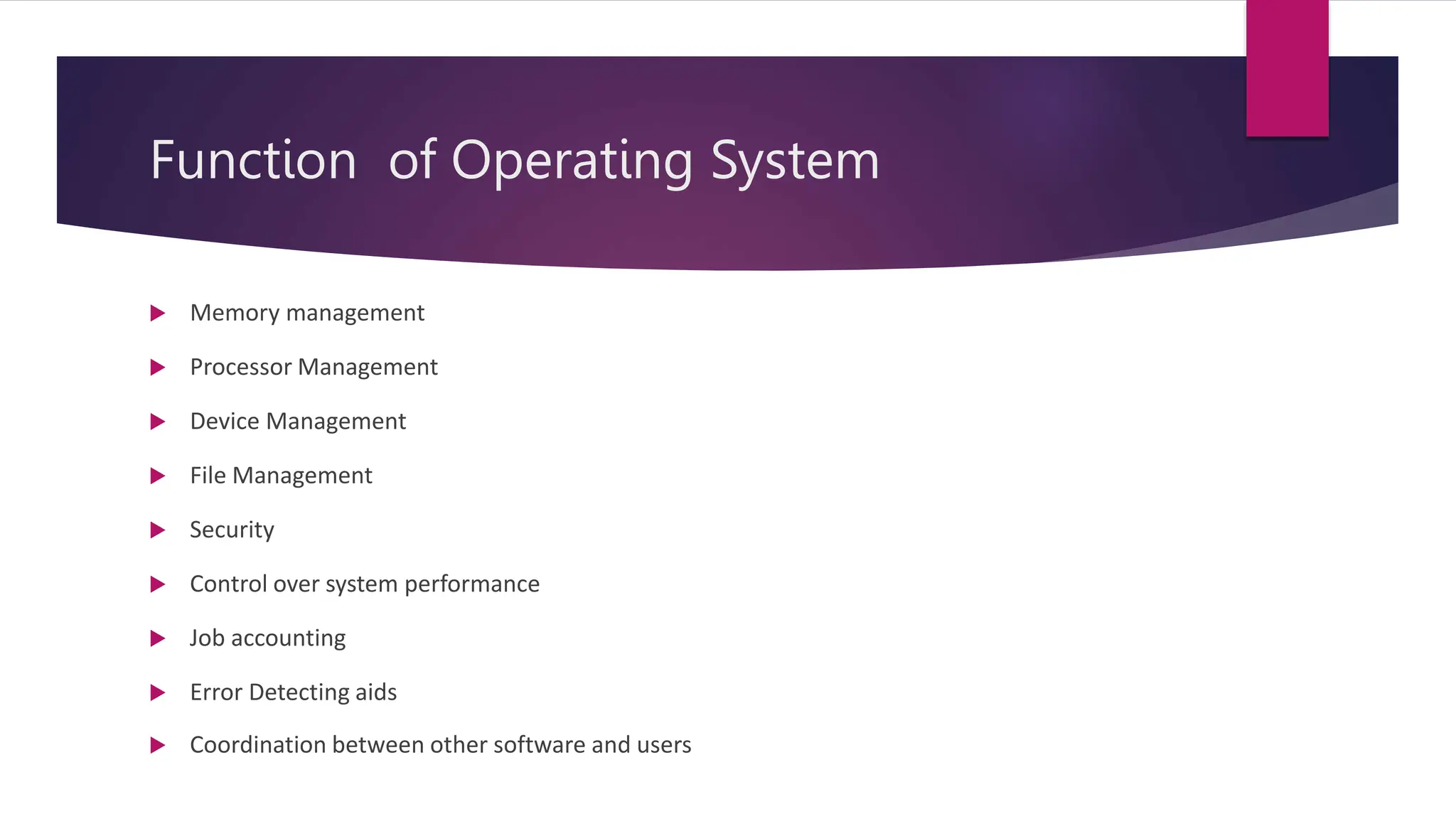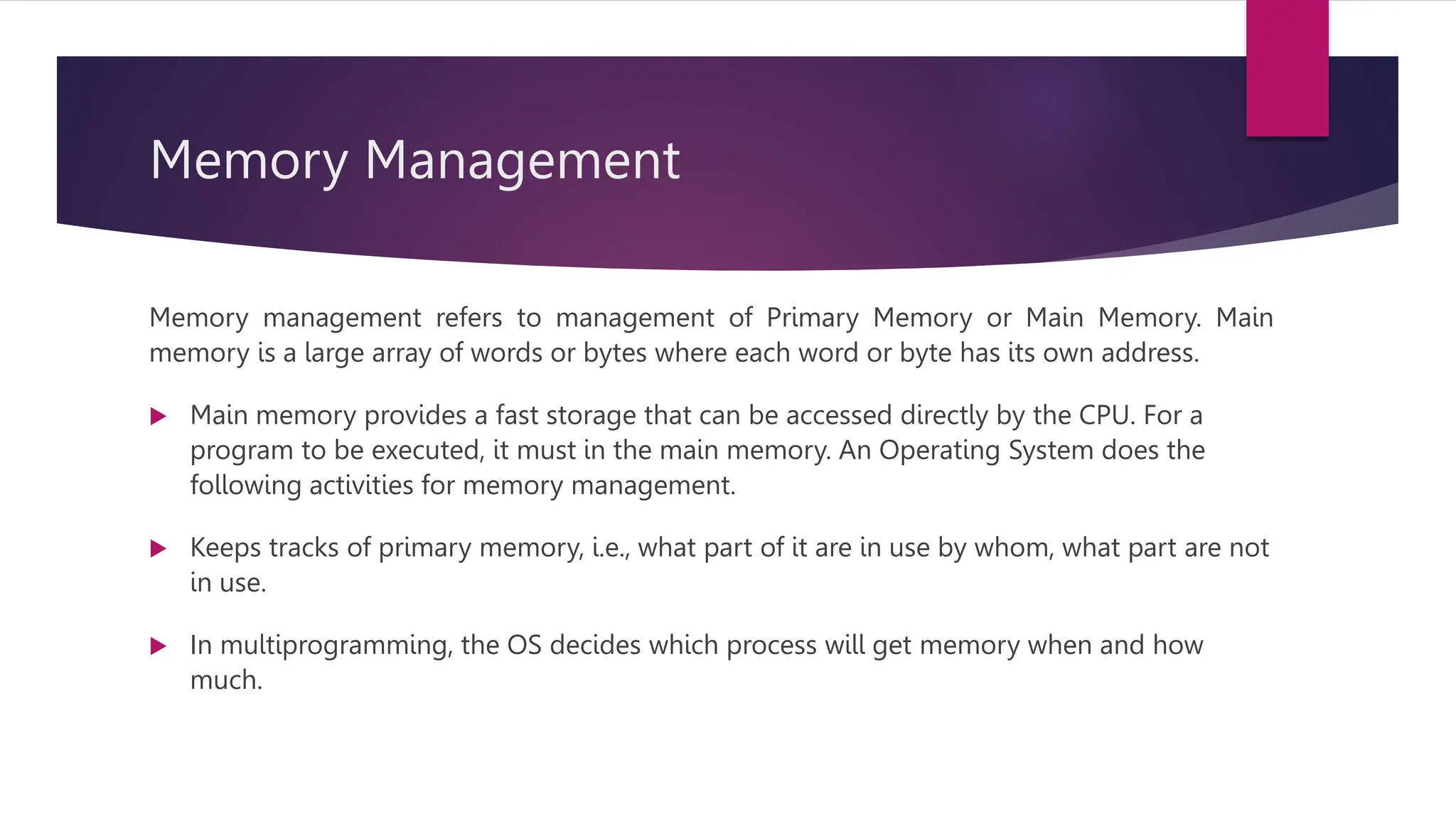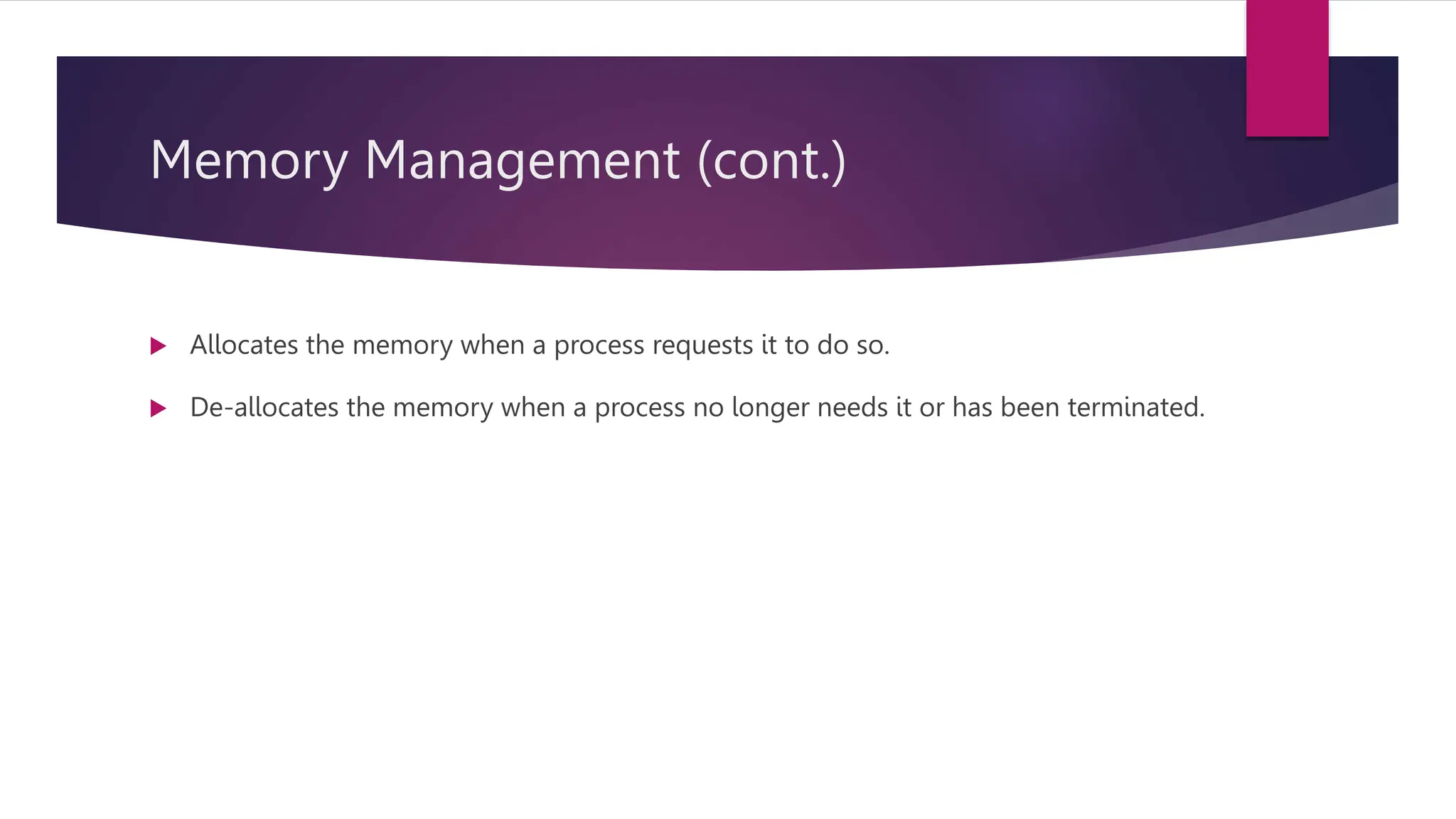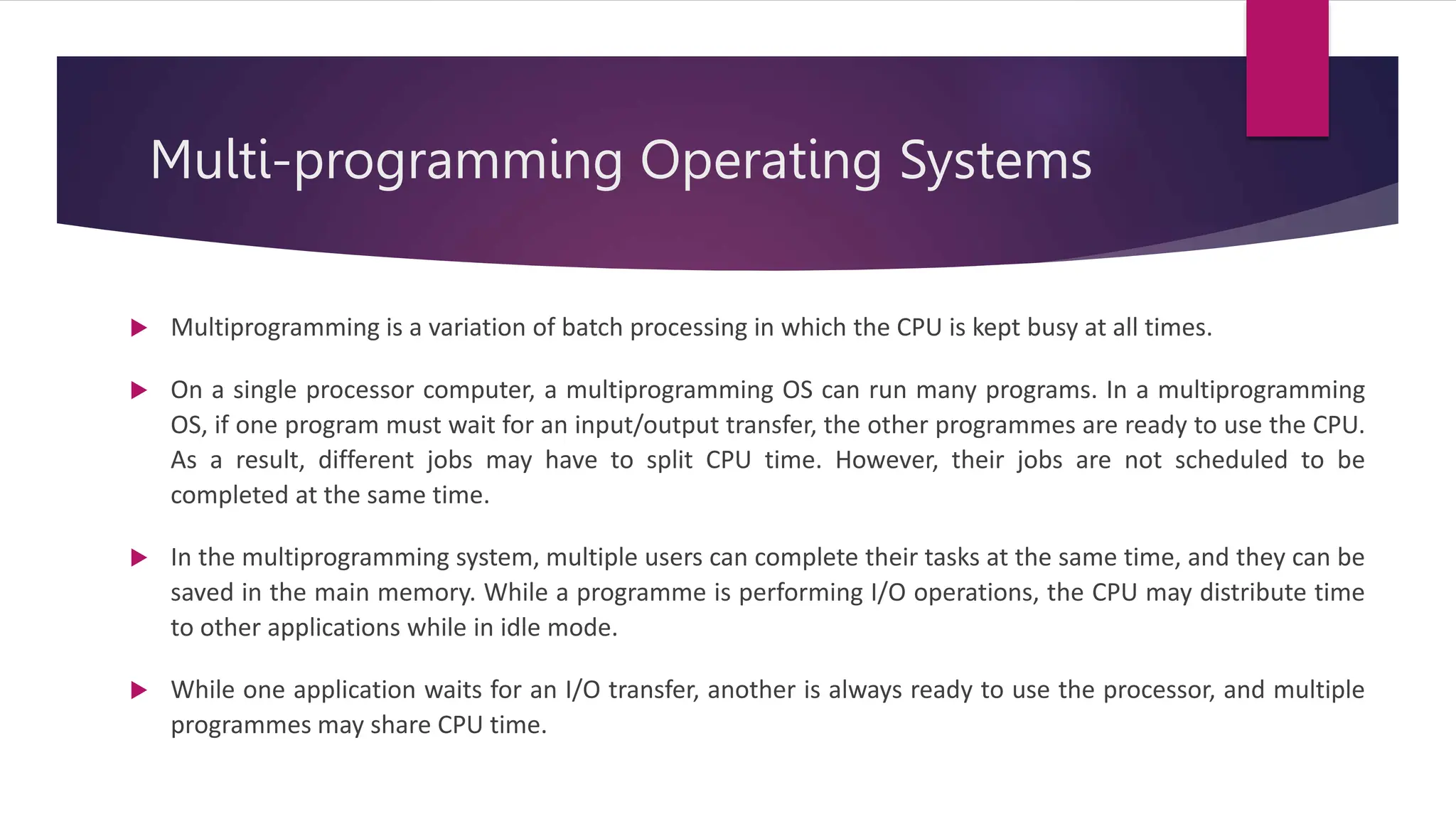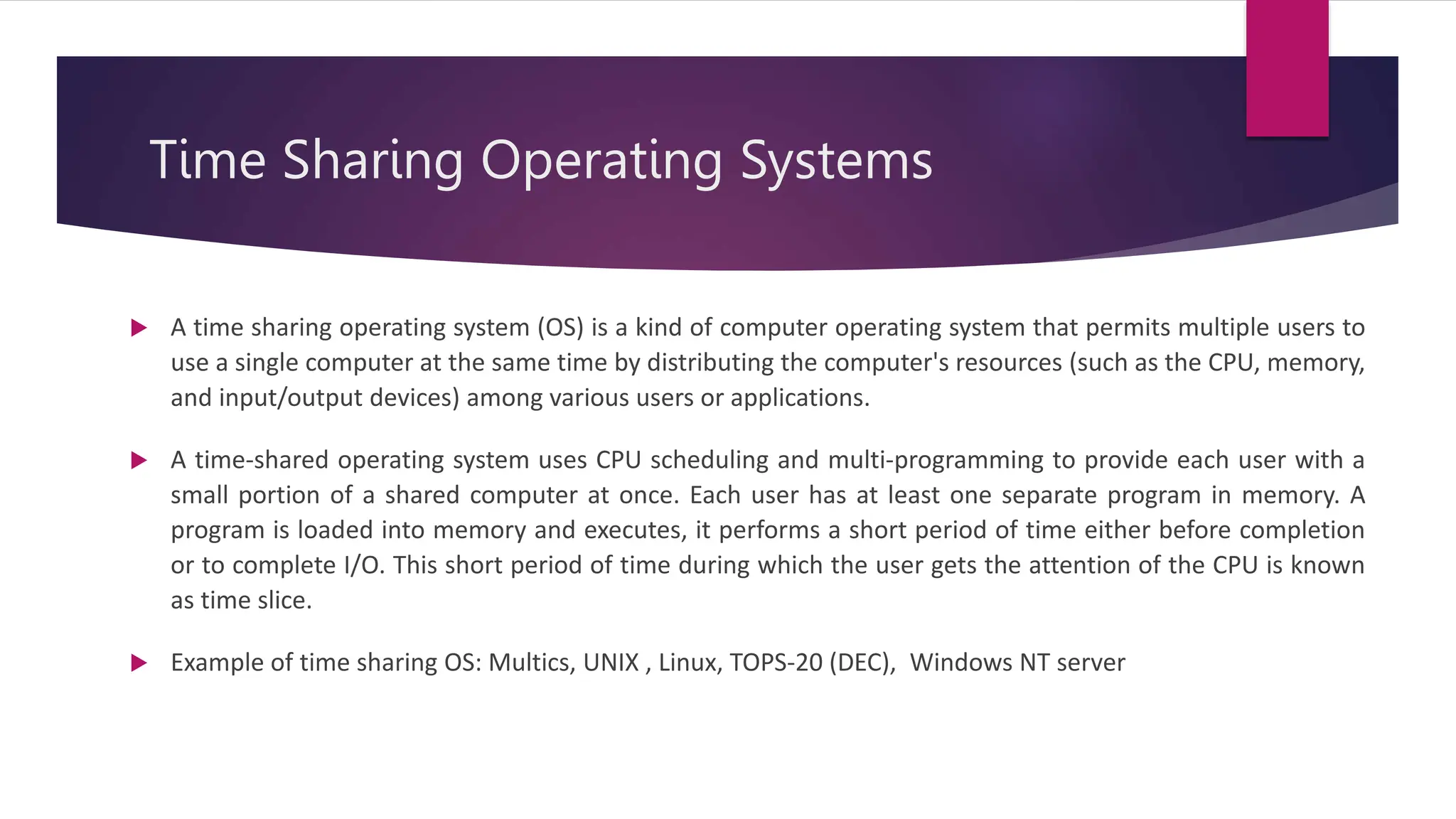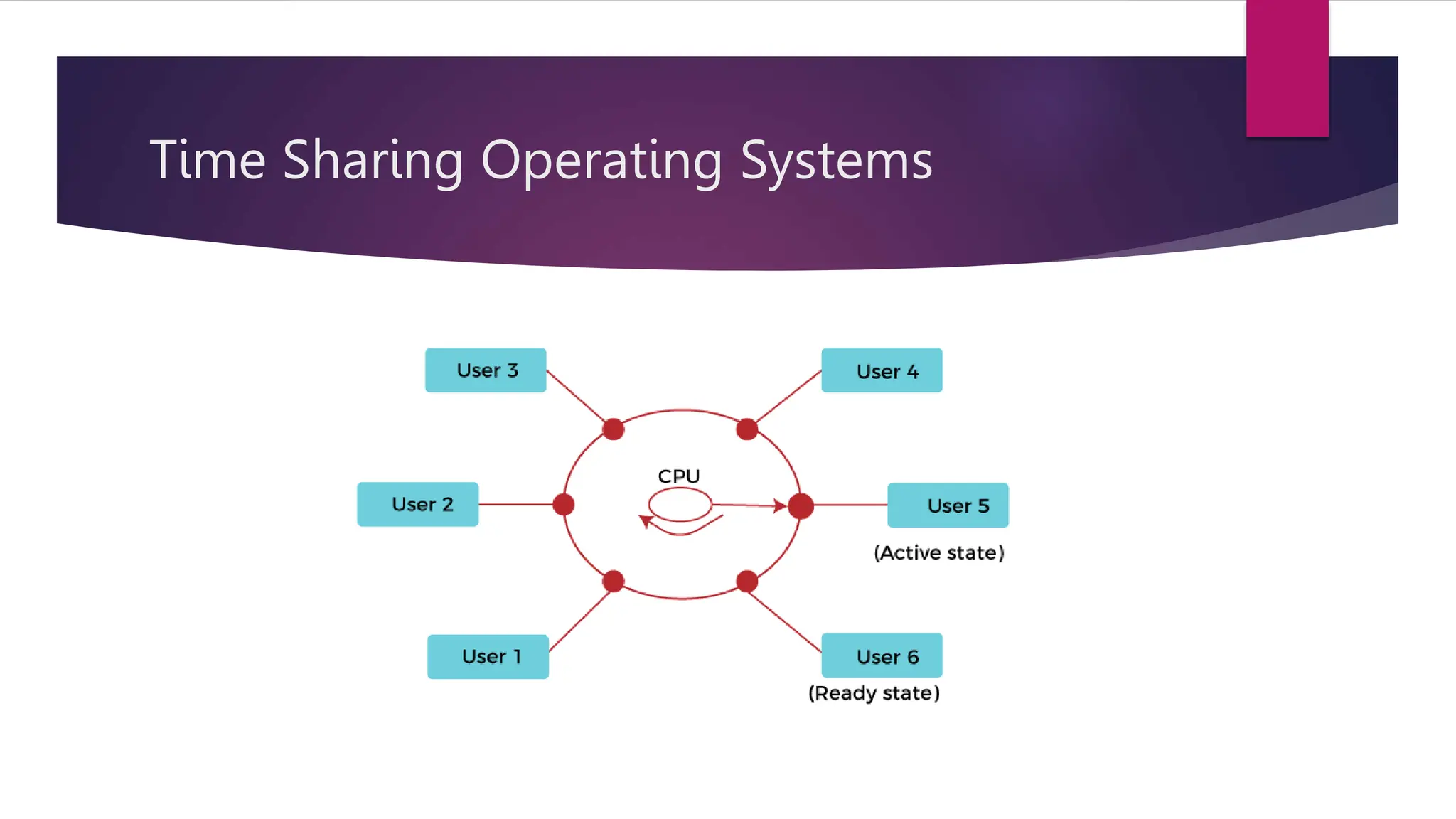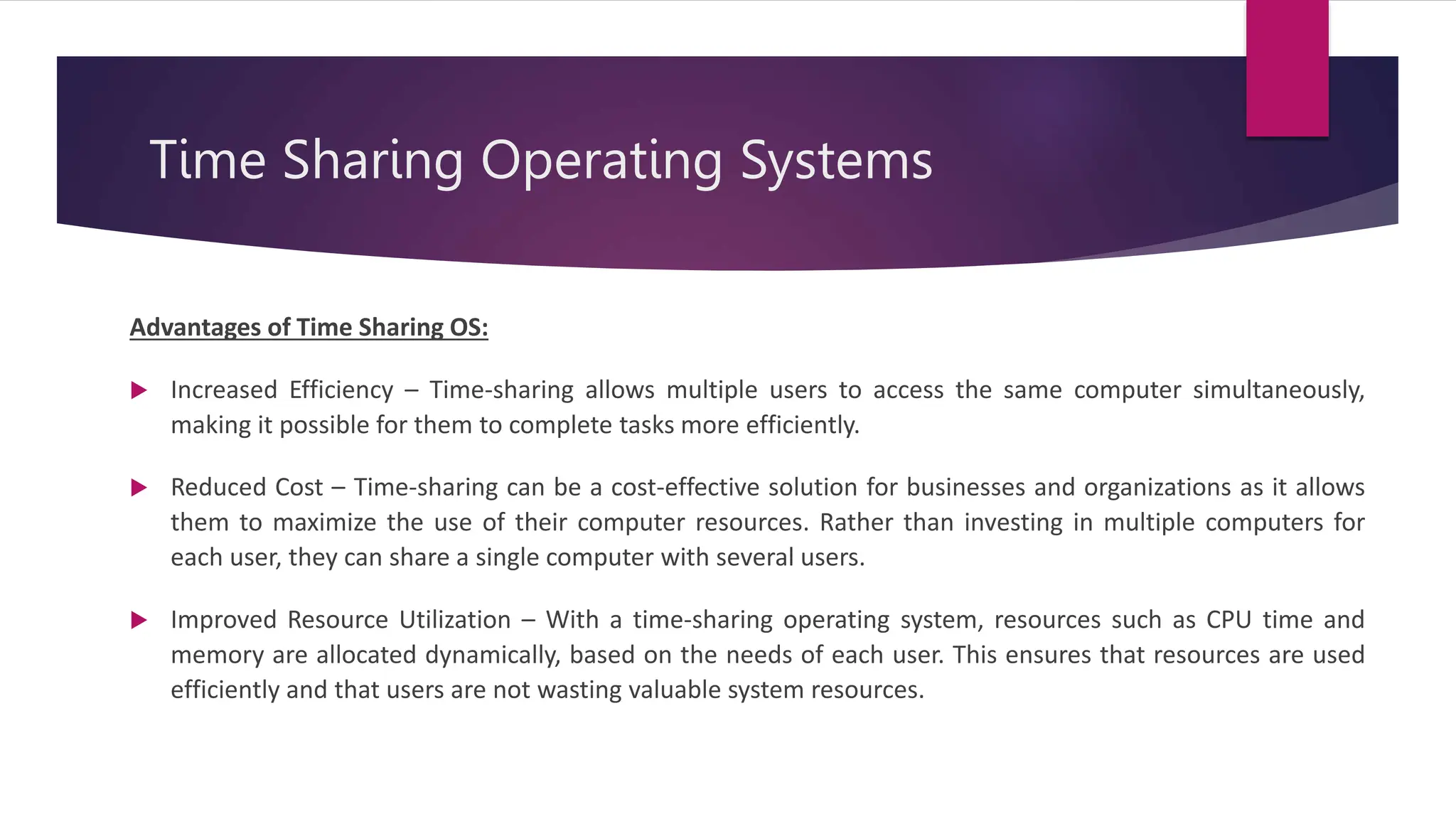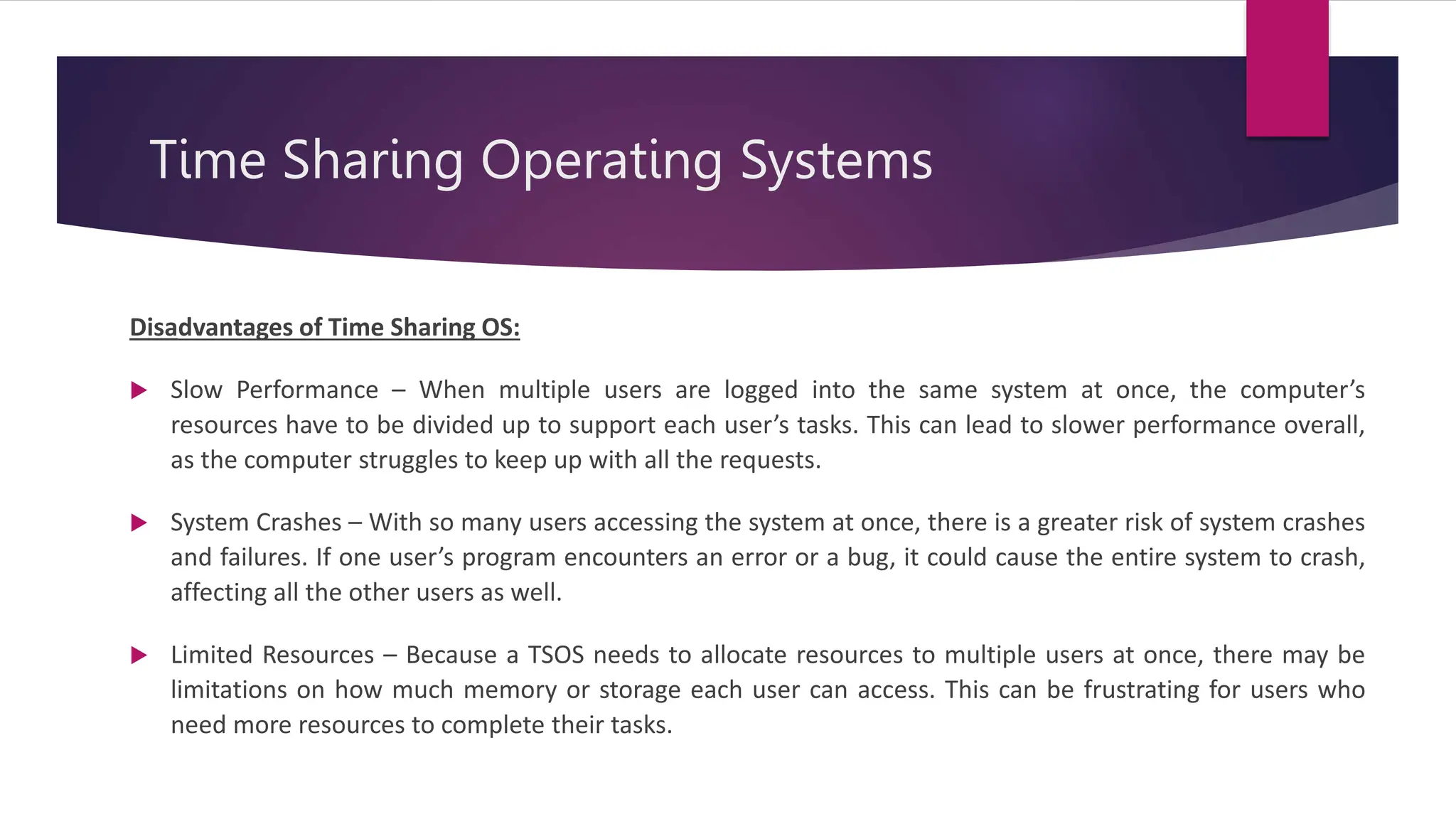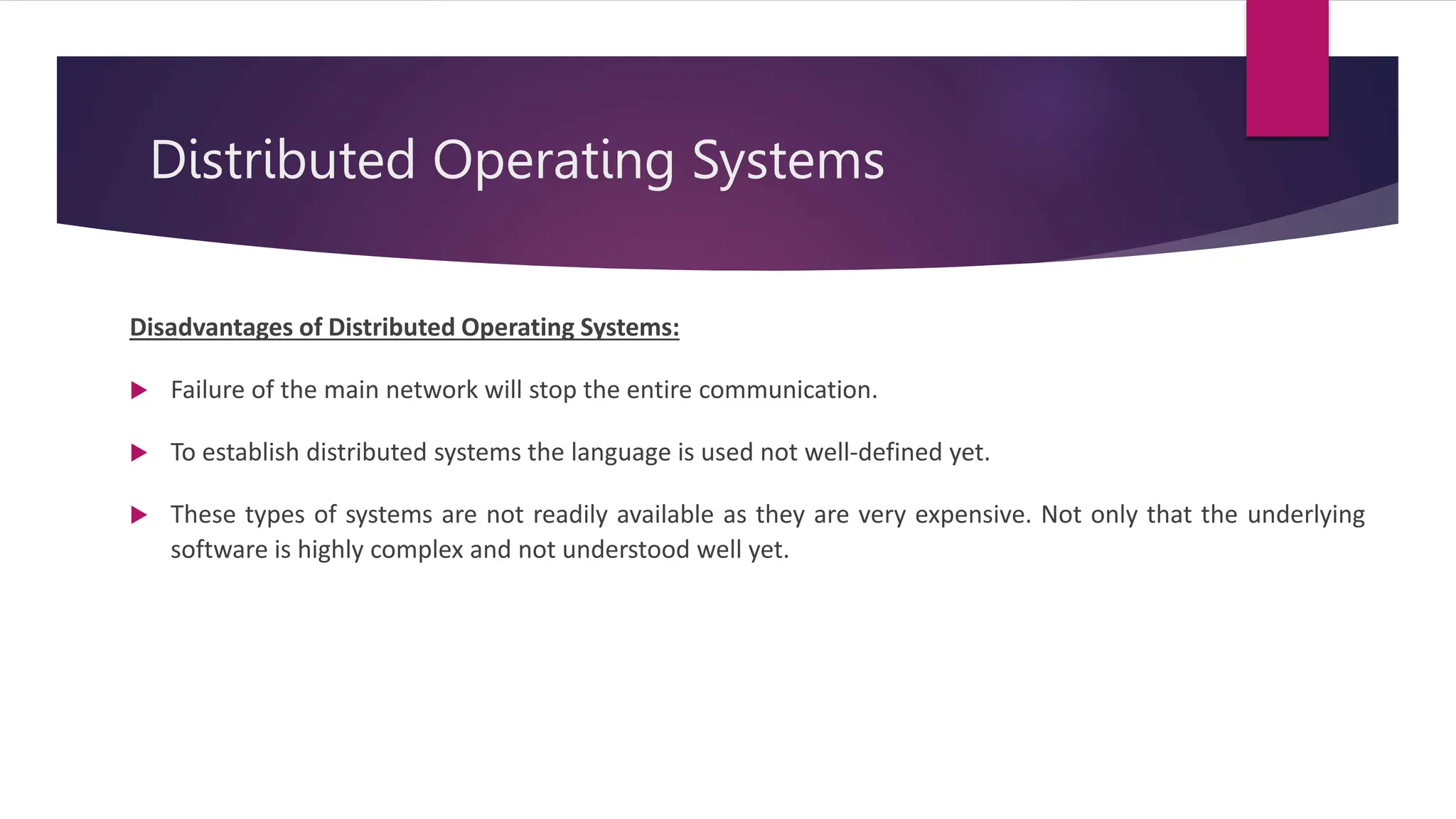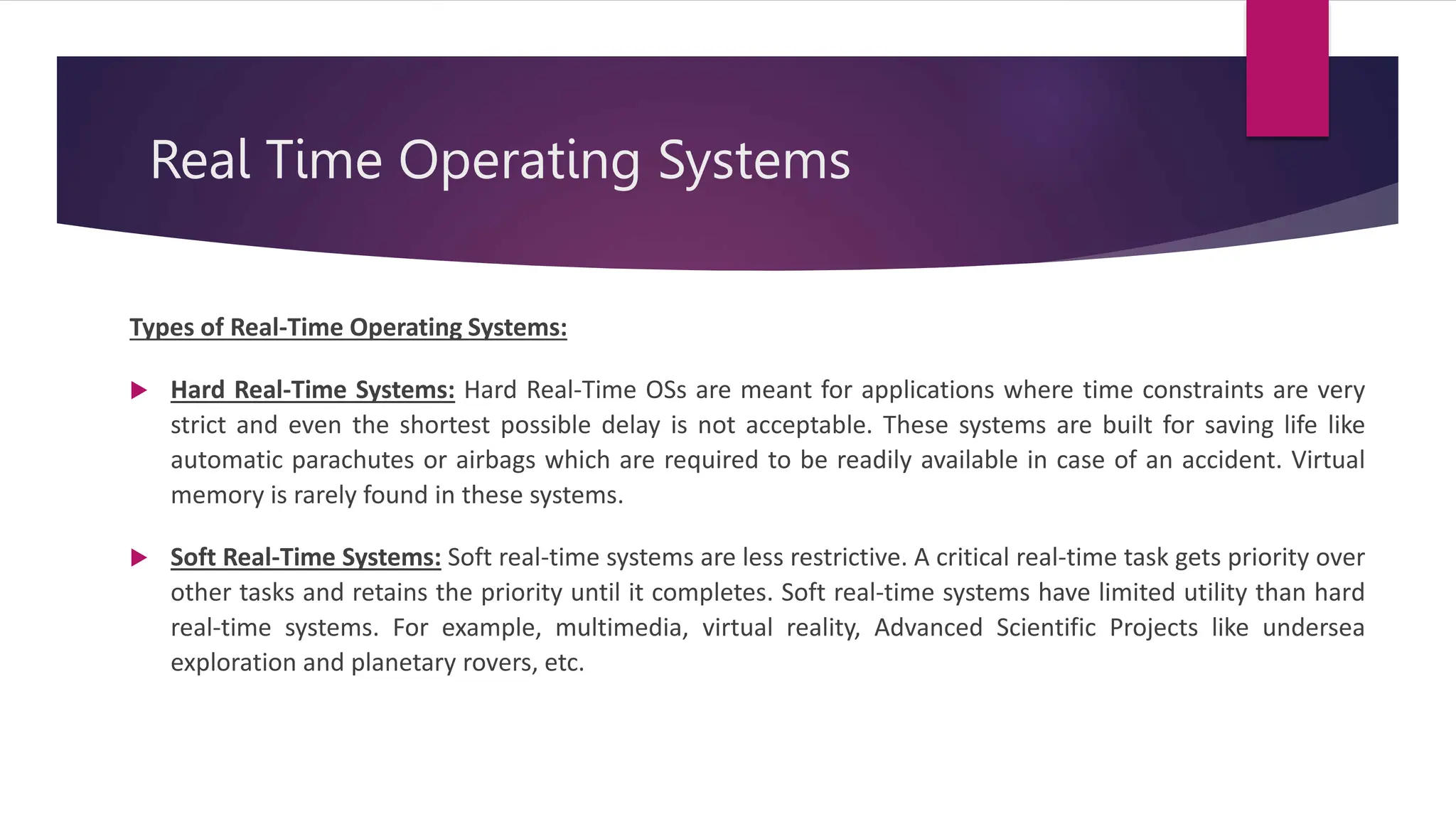This document provides an introduction and overview of operating systems. It begins with definitions of operating systems and their role in managing computer hardware resources and acting as an interface between users and computers. Some key functions of operating systems are then summarized, including memory management, processor management, device management, file management, and security. Popular operating system types are also briefly outlined, such as batch operating systems, multi-programming systems, time-sharing systems, distributed systems, and real-time systems.





